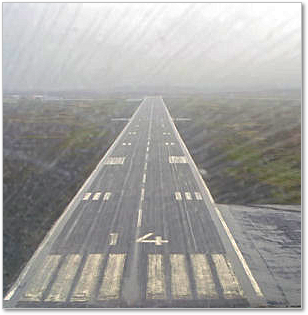Avoiding Hydroplaning
Source: www.pilotworkshop.com/tips/hydroplaning, Featuring Bob Nardiello
Subscriber question:
"I recently experienced hydroplaning when landing on a wet runway. Any tips for avoiding this or what to do if you encounter it?" - Kyle A.

Bob:
"Hydroplaning is a condition leading to ineffective braking and the potential loss of directional control. Landing on standing water, as little as a tenth of an inch, can create a situation whereby a film of water separates the tires from the pavement. There is a possibility that the brakes will lock up and the tires will ride on the surface of the water, much like a waterski.
Hydroplaning is related to tire pressure. Testing data indicates that the minimum hydroplaning speed of a tire is 8.6 times the square root of the tire pressure. For an aircraft with a tire pressure of 24 psi, the calculated hydroplaning speed would be 42 knots.
When confronted with the possibility of hydroplaning, it is best to land on a grooved runway. Touchdown speed should be as low as practical, consistent with safety.
After the nose wheel is lowered to the pavement, moderate braking should be applied. If deceleration is not detected, raise the nosewheel to utilize aerodynamic braking to decelerate to a point where braking will become effective." |